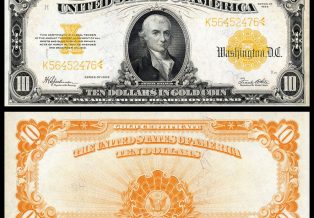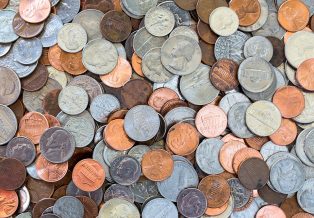All Posts in Coins & Currency

The USA first begin issuing gold certificates during the outbreak of the Civil War in the 1860s. However, no certificates with a $10 dollar denomination were introduced until 1907. The 1922 version is especially sought after by collectors since it marks the final large sized certificate that was ever printed. By the late 1920s American currency was reduced to the size most are familiar with today.

There are a number of things to take into consideration when determining the value of a star note, the most important of which are age, condition, the total amount of notes that were printed for a given denomination, and the print run size.

The 1928 $1000 bill is sought after by collectors, and its value will be determined by factors such as the district of issue, the star note, serial number, color of the seal and condition. Originally about 1,105,008 notes were printed in 1928, as of today it is estimated that less than 70,000 remain.

In recent years, restrictions have increased on cash transactions, especially in developed nations. Those who fly frequently know that many airlines no longer accept cash to purchase snacks and beverages during flights, and some stadiums in the U.S. have enacted similar policies. In Europe, countries like France, Spain and Sweden have banned cash transactions above a certain amount, requiring citizens to use electronic payments instead. While such measures won’t affect currency collectors much in the short term, the long term ramifications of such policies should be a cause for concern.

The 1899 $1 Silver Black Eagle was issued for twenty years. This means that, although each bill has the year 1899 printed on it, this doesn’t mean that is the year in which it was issued. To determine the actual date of issuance, it is important to examine its block letters and signature combination.

Color toning can raise or lower coin value. When the effect occurs naturally, it can be incredibly beautiful, but may also be downright unattractive. As such, putting value on these coins can be challenging.


